#From Globalization to Glocalization
Text
From Globalization to Glocalization

The term "glocalization" is a portmanteau formed by combining the terms "globalization" and "localization." This is a phrase that is used to describe a good or service that is developed and disseminated on a global scale, but that also has modifications made to it so that it can be utilized by or consumed by people in their respective local markets.
0 notes
Text
Seme/uke - long response
A decolonial and subaltern take on three posts on seme/uke dynamics that aims to contextualize them while questioning ethnocentrism. I welcome alternative perspectives, corrections and criticisms.
Post #1: Seme/uke dynamics in Be Loved in House...
@absolutebl responding to @echos-of-ivy
Seme – Uke
About two or more characters in a ship/pairing:
seme 攻め: top (the pitcher) (from origin - attack) also referred to as 左 (left)、タチ (tachi)、トップ (top)
uke 受け: bottom (the catcher) (from origin – receive / accept) also referred to as 右 (right)、ネコ(neko/cat)、ボトム (bottom)
riba リバ: verse (doesn't mind being either a top or a bottom) (from origin - reversible)
seme and uke are sourced from martial arts lingo: seme (martial arts), uke (martial arts) & is related to nanshoku tradition (depictied in ukiyo-e style painting below) of androphilia rather than western norms of queerness. Such differences in culture in queerness is seldom appreciated.

Spring Pastimes. Miyagawa Isshō, c. 1750
Sometimes, androphilic men use seme/uke/riba instead of the following terms which are popular in their queer community:
tachi タチ 凸 - top
neko ネコ 凹 - bottom
riba リバ 回 – verse
Other BL producing countries also have similar terms for seme/uke/riba. And those countries also have terms for top/bottom/verse/side in their queer communities.
For example,
In Chinese BL (danmei), seme/uke/riba -> gong (攻)/shou (受)/hu gong (互攻)[1]
In Chinese tongzhi community -
top: gong (攻) or 1 or 上 or 凸
bottom: shou (受) or 0 or 下 or 凹
verse: bu fen (不分)or 0.5 or 10
side: 不10 or 纯爱[2]
四爱 (fourth love) is the Chinese term for heterosexual relationship wherein the woman tops. When fictionalized, such romances are referred to as GB (girl boy) romance as opposed to BG (boy girl) and the heroine is referred to as female gong 女攻め.
In Thai BL, seme/uke/riba -> me (เมะ)/ ke (เคะ)/ se (เซะ) & their queer community have these terms.
Evolution
When the work does not involve sexual acts, seme/uke/riba is assigned based on speculation (‘what if’) in line with audiences’ preference. There are a bunch of stuff that are employed to determine the dynamics but owing to variation in taste, audience don’t always agree with each other. Since seme/uke/riba archetypes rose to that status with the yaoi (doujin) boom with development of comiket, etc. tanbi, June, original shonen ai and other such types of BL don’t follow these archetypes. Live action which follows, to an extent, the latter tradition, such as Boys Love (2006), also don’t have uke/seme/riba archetypes, instead follows the archetypes that was popularized by tanbi literary movement. Tanbi literary movement was queer in more ways than one. It preceded/birthed BL (Mori Mari) and influenced it.
As no culture is passive recipient [pun intended], different glocalizations of seme/uke/riba dynamics exhibit different features, both within and outside Asia (eg. original English-language BL publication).
IRL
While being top/bottom/verse/side pertains to sexual preference/choices and acts or lack thereof, it is not devoid of other implications. Here are some interplay between these preferences/choices and the implications to consider:
Are these preference/choices innate or socially formed? Or both? Or neither?
What does it mean to be top/bottom/verse/side – within and outside the queer community?
Performance of masculinity, femininity, neither. Which masculinity/femininity? Is that masculinity/femininity performance – marginalized, soft, protest, hegemonic or amalgamated?
How local and global queer cultures influence it?
Is it some kind of conformation/attempt to fit in? If yes, what kind and why?
How are those choices impacted by history (including that of colonialism), legal/political implication (e.g.: pink certificate in Türkiye), local forms of patriarchy & heterosexism, class, nationality, race, skin color, caste, age, employment (including sex work) or lack thereof, physical location & avenues of exploration, abilities and disabilities, access to internet & other infrastructure, education (including sex education), health conditions and access to medical care, etc.
How do they form expectations regarding oneself and others?
While it can be argued that there shouldn’t be any other implication associated with such preference/choices, one can not simply wish them away as it is more often than not linked to certain social realities.
BL as well as gei comi are genres of fiction, telling tales of male androphilia – these are reproductions of imagination entwined with realities, reflecting desires, fantasies and biases plenty.
Conflation
I disagree that uke/seme/riba archetypes are conflated “casually” with bottom/top/verse in narratives and discussions around them. There is a difference that P’AbsoluteBL probably isn’t aware of:
Uke is the bottom in a ship. A character could be uke in a ship, seme or riba in another. For a character to be a ‘bottom’, he has to be sou uke or total/complete uke. It means no matter who he is paired with he will always be the uke.
Alternatively, a sou uke is a character that makes all other characters become seme for him and go after him.
Similarly, a character could be called ‘top’ when that character is a sou seme or total/complete seme. Unless a character is established as a sou seme or sou uke in the narrative, there is always a possibility that those characters are verse. While most BL involves set ships, it is not rare to find characters who are uke in one relationship becoming seme or riba in another. Sometimes, after a time skip, transmigration, reincarnation, etc. BL characters end up switching within a ship.
In Live Action
While there is plenty of riba ships in other BL media, live action has had very few.
These couples were riba in the novel:
Bai Luoyin and Gu Hai – Addicted – The censorship struck right after the couple had their first coitus interfemoris (based on the chronology in the novel).
Lu Feng and Cheng Yichen - A Round Trip to Love
Lan Yu and Chen Handong - Lan Yu
Dom/sub
While the P’AbsoluteBL is allowed to do whatever, I don’t think correlating dom/sub with seme/uke is a good idea in the context of BL because:
BL has a separate speculative fiction subgenre called dom-sub-verse (Dom/Sub���ニバース) which have its own conventions. It is one of the many subgenres that took inspiration from omegaverse and has grown parallel to it. It takes dominance and submission from the kink community and explores them as innate/biological traits.
It involves characters who are identified as Dom(ドム), Sub(サブ), Switch(スウィッチ), and Usual/Normal/Neutral(ユージュアル/ノーマル/ニュートラル). Along with the standard elements of BDSM in fiction such as safeword, sub space, sub drop and aftercare, it also involves additional elements such as kneel(ニール), glare(グレア) and collar (カラー). There are commands コマンド (命令) that Dom gives to Sub. Sometimes elements borrowed from omegaverse such as heats/ruts, suppressants and professional Dom also appear in this sub-genre.
Dom×Sub ship: Dom is the seme & Sub is the uke.
eg. Hizamazuite Ai Wo Tou 『跪いて愛を問う』 & Rhetoric 『レトリック』 by 山田ノノノ
Mijuku Na Boku Ha Shihai Wo Kou 『未熟な僕は支配を乞う 1』 by音海ちさ
Sub×Dom ship: Sub is the seme & Dom is the uke.
Jouzu Ni Dekita Ne Watasesan 『上手にできたね、渡瀬さん』 by 野萩あき
Shoshinsha Dom Ha Hameraretai 『初心者Domはハメられたい』 by やんちゃ
Gohoubi Ni Kubiwa Wo Kudasai (ご褒美に首輪をください) by Naruse Kano
Dom×Switch ship: Dom is the seme & Switch is the uke.
Sono Meirei De Ore Wo Abaite 『その命令で俺を暴いて』 by 小夏うみ
れ愛の声で暴いて by 泉門くき
いでおすわりしてみせて by 由元千子
Switch×Switch ship: One of the switches is the seme and the other the uke.
強情なSwitchの躾け方 by ことぶき
Dom×Dom ship: One of the dom is the seme and the other the uke.
コマンドミー、プリーズ by 町田とまと
サディスティックに暴かれたい by 星崎レオ (uke is a Dom, seme’s identity is not made clear)
Kyousei Switch 『強制Switch』 by 彩田あまた
Like most BL genres, it is yet to make its way into live-action BL.
There are plenty of BDSM themed BL as well as training (調教) style BL where seme/riba/uke can be switch or sub or dom.
Problematizing the Problem
Hence, the argument that conflation of seme/uke with top/bottom is “a PROBLEM” is ironic. The main reason given for that argument is that “het consumers [would] conflate (egregiously & incorrectly) top with male/masculine and bottom with female/feminine.” Here are some things that I think is relevant to think about that:
Why would ‘het people’ or any people for that matter think in terms of male-female / masculine-feminine binaries?
Do they think in those binaries only and not other binaries such as wen(文)-wu(武)?
Why think in binaries and dichotomies at all?
Don’t they not think in terms of multiplicity of genders/gender expressions such as various kinds of masculinities and femininities) based off on their local contexts?
Do queer people not make such/similar conflations? (Hint: they do.)
Is it a problem? While this seems to be the popular notion, plenty of scholars from across the globe has dismantled it.
What exactly do P’AbsoluteBL think ‘het people’ conflate riba characters with? Feminine-feminine? Masculine-masculine? Neither? Both? Something else?
There are different conceptions of masculinities within a culture which get reflected in cultural goods, including BL, from there.
Here are some really old depictions:
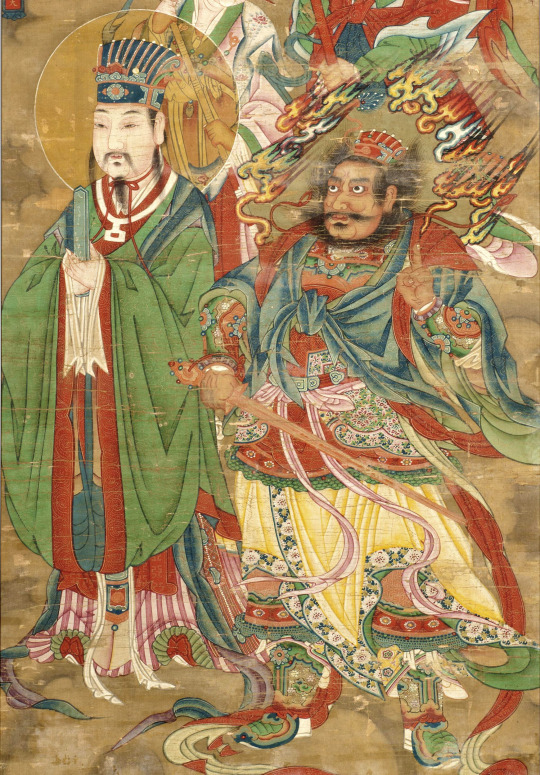
Qing dynasty Chinese Water and Land Ritual painting depicting a divine civil official and thunder god in military regalia. [Wen - wu]
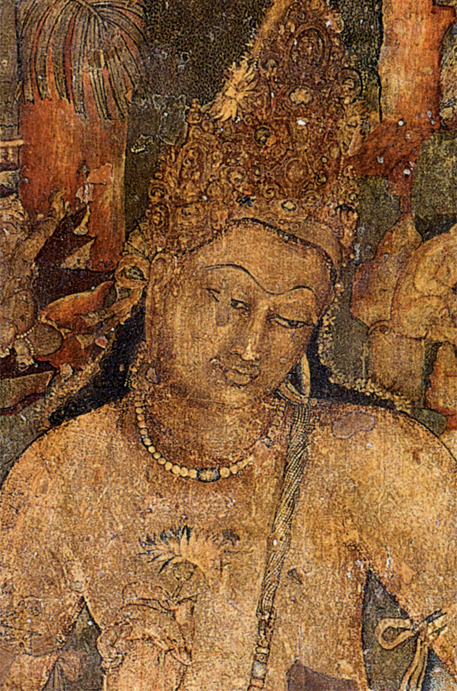

Paintings of Padmapani and Vajrapani on either side of the Buddha, from cave 1 of the Ajanta Caves.
Moreover, if the problem is hinging on a particular understanding of seme/uke: the one in which seme is not feminine or uke is not masculine enough. If latter is the issue, it can be fixed by sticking to BL media with otokomae uke or macho uke. If former is the issue, there’s more than enough works with maiden seme and josou seme. If one is yet to encounter any such works, one is not looking far enough.
Masculinities in BL

Here are three central characters from Finder series embodies different types of masculinities – a lot of it is presentation, physical attributes, age, power and social standing.
Akihito is a young and vivacious uke who happens to be short and sinewy.
Asami Ryuichi is a supadari seme: a guy who is tall, well educated, high earning, with good looks. In addition, he cooks and cleans and cares when he wants to.
Fei Long is tall, beautiful and cunning and can be regarded as a riba character.
But can any of these characters considered not masculine by regular standards? Isn’t Akihito masculine enough for his age? And if we are to compare Asami, we are sure to find him lacking but then give him time to grow. They have a dozen years between them. Moreover, can average men stand comparison with a super darling? But then in the grand setup of patriarchy, isn’t power concentrated in the hands of the older men who dominates even the super darlings, both in real world and fictional ones.

Ayase Yukiya & Kanou Somuku from No Money
Consider the case of Ayase, would you call him a “feminine” uke? Probably yes. He is small in stature - petite and cute. He is definitely very small in comparison to his seme Kanou. They probably have one of the most exaggerated size differences and an extreme case of the traditional pairing.
The traditional pairing comes from the customary practice of androphilia in pre-modern Japan. It involves relationship between a wakashu and a nenja or from the tradition of nanshoku. The former is not considered a man by the period’s standards and is considered a third gender by some scholars. The latter is considered as a mentor and lover for the former. While the traditional faded with ‘modernization’, tanbi literary movement (among others) kept alive remnants of it through the writings of the likes of Yukio Mishima.
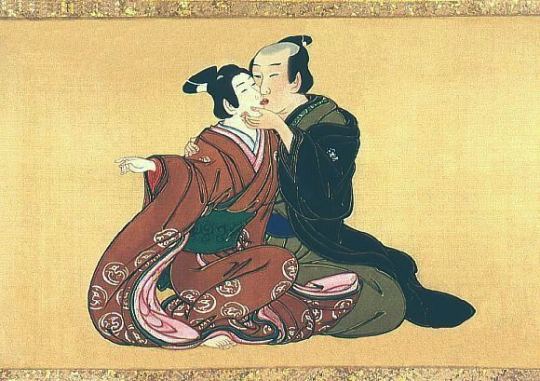
Note that the youth on the left is wearing a kimono whose style (furisode) and color was considered appropriate for adolescents of both sexes but not adult men, which along with the partially shaved pate denotes the boy's wakashū age status while the exposed bare feet indicates the purely sexual demeanor.
The traditional pairing has clearly inspired Japanese mangaka both BL artists and others. Look at the wakashu in customary androgynous clothing, younger, fairer and even smaller than the nenja, with relatively less experience being embraced by nenja who is in customary male clothing.
Check out more shunga about nanshoku to see visual ancestor of “yaoi”. The visual legacy continued with the likes of Go Mishima. The queers did it first.

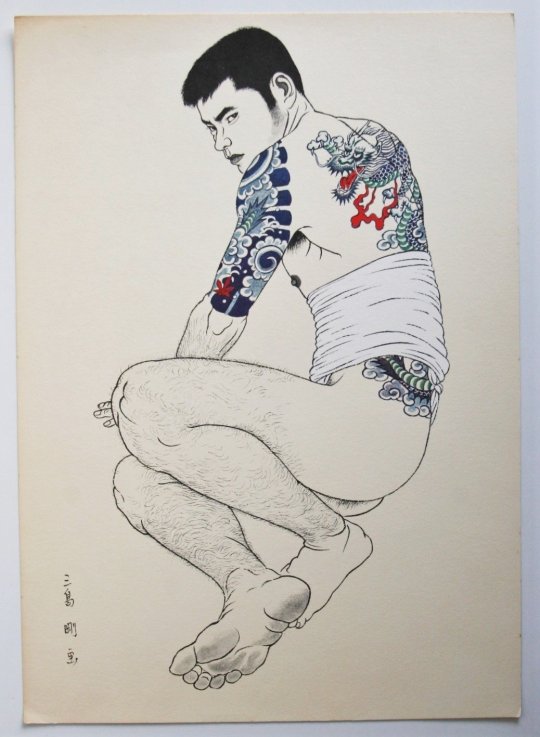
From the series "Mishima Go Book of Young Man" - Japan - 1972 (Showa 47)
Ayase in No Money fits into the wakashu ideal. Moreover, the creators of this manga explicitly differentiated between feminine uke with wakashu uke by juxtaposing Ayase with Someya who embodies traditional femininity.
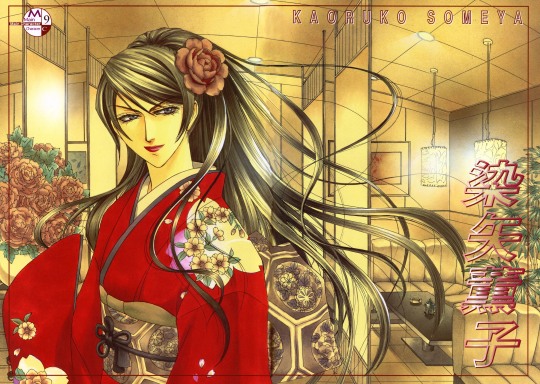

Someya and Honda from Henshin Dekinai
Putting it into perspective, it is noticeable that many a BL involves similar pairing. A lot of criticism BL faces is when it sticks to nanshoku dynamics. Interestingly, critics who can’t imagine genders beyond masculine and feminine, fail to tell apart “feminine” characteristics from wakashu characteristics. But there is no dearth of such dynamics getting subverted in numerous ways in BL:
ship with younger, lower class, petite, androgynous or any combination of customary wakashu characteristics in seme/riba.
ship with all parties being of similar age, class, physical attributes, experience, etc.
Emancipation
Shouldn’t typical uke archetype be seen as an example of subversion of the main character masculinity that dominates media landscape? Shouldn’t they be exalted for being what they are? Uke archetype that allows all genders to project onto and gain pleasure from, is that any less than a marvel in itself?
Pursuer & Pursued
In order to analyses if there is a shift in seme-uke dynamic, the P’AbsoluteBL employs the following to categories who is active:
who is pursuing whom
who makes the first call in terms of declarations and physical touch
who seems to be more in charge of the relationship
In BL, these are never reserved for seme/uke/riba. Who takes on which role depends on the narrative. BL rarely have fixed pursuer-pursued. All parties involved in a ship take on active role in different circumstances.
Take, for example, the original edition of Ossan’s Love, Hasegawa Yukiya employs certain indirect tactics to pursuing Soichi Haruta such as cooking, cleaning and caring for him. (These are tasks that seme/riba/uke usually engage in lighter BLs to gain and retain the attention/affection of the one they are pursuing.) Hasegawa also engages in activities they do together as a means to grow closer.
Once he learns of his love rival, he switches up the tactic. He pursues more directly and aggressively. Soichi rejects him. He withdraws and returns to the original tactic but without attempts to grow closer.
Soichi feels the loss and tries to get close to Hasegawa but is brushed off. He does not back down. Instead, he takes on a more aggressive route of pursuit - making amends and chasing after Hasegawa.
What P’AbsoluteBL implies with “I think BLIHID’s main couple has a REALLY weak seme/uke dynamic from the get go” is made abundantly clear in with “ShiLei does a lot of active pursuit, also he’s very self actualized.” Here, using pursuer/pursued would have sufficed. Instead, P’AbsoluteBL chose to disappropriate established terms ‘seme/uke’ and imbibed them with implications of “active pursuit” as well as “self-actualization” [regarding queer identity] that seme/uke/riba doesn’t carry originally. Most of it based on biases built on equating all BL to one type of BL: the one with traditional pairing that follows royal road progression.
What P’AbsoluteBL actively avoids discussing is that Beloved in House is basically following the super popular ‘domineering president’ plot based on a BG romance.
Live Action Struggles
P’AbsoluteBL mentions an imagined ‘struggles around seme/uke’ in live-action BL. I think the actual issue plaguing live action BL is the struggle to balance business and other interests while being able to do justice to the diversity within BL as a media genre.

source: (chil-chil.net)
In the chart:
ほのぼの – heartwarming – Example: Restart After Come Back Home
コメディ – comedy – Cherry Magic
ダーク – dark – Sing in Love
シリアス – serious – Cornered Mouse Dream of Cheese
キュン – exciting (kyun) – Mr. Unlucky Has No Choice but to Kiss
Japan has trouble in diversifying its live-action in terms of sub-genres and treatment/mood. Even Thailand, despite the amount it produces have trouble offering variety. Riba couple, maiden seme, yarachin characters, yandere X yandere ship, etc. are either very rare or non-existent in live action BL. Moreover, live action BL is seldom explicit and are mostly in the speculative territory with seme/uke/riba dynamics, making it all the harder to diversify.
Tbh, what fascinated me the most is the “I kind of automatically cringed” part of the question. I would love to know what brought about that reaction. I am sure that it would help shed some light on discourse surrounding BL in general.
Post #2: Blushing Maiden Trope & Seme/Uke
Discussion (intended and in italics) between an anon, @heretherebedork & P’AbsoluteBL on actions and reactions during physical relationships.
The discussion centers around “the character placed into the stereotypically feminine role” being repulsed/reluctant/hesitant when it comes to physical relationships. It is directly attributed to “purity culture in BLs”.
BL have a complicated relationship with “purity” or being “clean”. Tanbi roots of BL hinged on sexuality and obsession with beauty to the point of decadence. Shonen ai (original meaning) works also had characters who are usually promiscuous for one reason or the other, never forming very deep relationship (at least not enough to stick to monogamous unions for long) yet endlessly entangled with other characters, often baffling non-queer characters in those works.
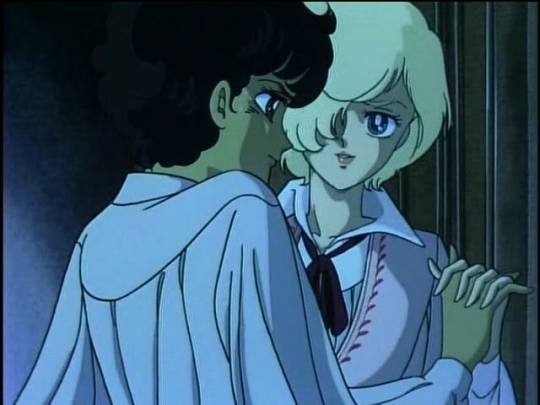
from Song of the Wind and Trees
*
[Inviting readers to hazard a guess: who is the seme and who is the uke. Answer at the end of this post.]
*
But how explicit the depiction of physical relationships has varied in BL with time and space. Japanese BL with the self-published BL (aniparo / yaoi – original meaning) boom saw very explicit depictions side by side with the commercial BL which have barely any explicit content or those which take a closed-door approach. Now Japanese BL have a wide range in terms of explicit content and have grown to incorporate elements from other genres including gei comi. Korean BL is similarly doing well. It is not uncommon to have chapters or parts of chapter in manhwa and novels dedicated to the celebration of physical relationships. Thai BL also have no dearth of explicit content, especially in web publishing.
Chinese BL in its early days had lots of explicit content, especially in self-publishing. But as censors started taking notice and cracking down, authors and platforms clamped down. Most BL were purged of any & all explicit content. Some of it migrated to Taiwanese platforms, AO3 & other foreign hosts. Now all danmei published is “pure love” devoid of even allusion to depiction of any physical relationship beyond above neck action.
When it comes to BL live action, things are a little different. In Japan and to an extend abroad, there has always been overlap between audience of BL and audience of Japanese GVs and pink eiga. Moreover, early live-action Japanese BL was probably aimed exclusively at hardcore BL fans. They were way more explicit on average and did not always involve physical relationship between the main ship.
Same seems true about early live-action Chinese BL. A Round Trip to Love Part 2 (2016) even had bondage and SM scenes which wasn’t there in the novel; but then it didn’t have the hard-earned happy ending the novel had either. But now, even dangai with “socialist brotherhood” (社会主义兄弟情) can’t be aired. Meanwhile, Japan’s average BL today lacks much explicit content. This isn’t to say that it doesn’t drop an occasional Sei no Gekiyaku (2020) once in a blue moon. Here are my speculations to why more of those doesn’t get made.
There is another reason for “purity culture” in BL.
Sathaporn Panichraksapong, an MD of GMMTV, a major producer of BL series, claimed that audience members who are mainly heterosexual women look for romantic relationships among the characters rather than sexual relationships.
We know that our audience are [sic] women. Women want to see only two boys having romantic moments together. They don't want to see sex. Sexual relationships in BL are for a gay audience. That's why in SOTUS the Series we have only two kissing scenes. With only these, audiences were already screaming. This is enough for them. (Interview with Sathaporn, GMMTV, 10 Aug. 2017)
Jirattikorn, Amporn. "Heterosexual Reading vs. Queering Thai Boys' Love Dramas among Chinese and Filipino Audiences." (2023).
As Jirattikorn goes on to highlight, this [wrong] perception about the audience (“women”) have changed ever since.
While early BL series tend to portray pure love without showing many sexual relationships, later BL series started to show more sex scenes between the two male lead characters.
Jirattikorn (2023)
“It’s always the character being pursued, who is typically in his first relationship, who Never Thinks Of Sex. They’re often very sweet and innocent and wide-eyed.”
While heretherebedork attributes it to “purity culture”, it can be argued that this has to do with what audience wanted:
I like the way they portray love in Thai BL. It is a kind of puppy love. BL of other nations, like Chinese BL, are darker. In Thai BL, two male characters often start off friends, then develop feelings for each other. It is very light, very sweet. (Krissy, f, 27, Philippines)
Jirattikorn (2023)
and what media houses thought they wanted, as evidenced by Jirattikorn’s interviews with BL fans. This is not to dismiss struggles with purity culture which is often a very slow part of decolonialization.
P’AbsoluteBL goes further to the argument that “purity” is associated with seme/uke dynamics in BL and maps it to typical het pairing (BG):
The stronger the seme/uke dynamic (the more heterosexually dysmorphic and less actually gay) the more likely this trope will manifest. Simply put: the man (because he is hooah a MANLY MAN DUDE) wants sex but the woman (delicate pure flower of cleanliness and joy) does not. And if she does want it she is a DIRTY, worthless, whore - so she MUST protest sex (GASP) at every single turn. (Seme is acting the male and uke the female in these kinds of narratives.) *please sense my sarcasm dumb interwebs, mm’kay?*
It’s true that the argument seems persuasive but is it right? Probably not. Seme, uke and riba characters can be divided into strong/weak categories based on their characterization - with the strong ones being those who pursue, take initiative, most likely to initiate intimacy at least for their first time, etc. and weak ones being those at the receiving end of pursuits and initiatives. Pairing a strong one with a weak one is probably more traditional –
strong riba x weak riba like in Addicted (at least before time skip)
strong seme x weak uke like in Old Fashioned Cupcake
weak seme x strong uke like in Saezurutori Wa Habatakanai (at least before time skip; pavam Doumeki)
compared to those with both parties being strong (which leads to delectable friction and sparks flying when done right) or both being weak (which leads to audience wondering: will either of them do something? No? Very well!).
BL’s sex negativity
Seme gets overwhelmed by his lust for uke, acts aggressively and has to be shut down or warned off.
Not only seme, uke and riba characters does this too. P’AbsoluteBL attributes “getting overwhelmed by lust” and “acting aggressively” to seme when it can be attributed to both uke (襲い受け) and riba as well. Other than acting aggressively, characters may employ seduction (eg. Xia Shang Zhou in You Are Mine (2023) - tried and failed & Charlie in Pit Babe (2023) - successful) and/or manipulation (Color Recipe by Harada).
Seme won’t take no for an answer because his needs are too great and his needs take precedence (he’s “the man” after all) and the uke is just TOO CUTE how could anyone resist? (After all the seme is only gay for this one guy because he is so cute. Everything, therefor, is the uke and his cutenesses’ fault.)
Moreover, P’AbsoluteBL is probably not aware of kawai seme who employ their cuteness to get uke to lower the guard and to seduce. Cuteness is clearly not a uke prerogative.

Like the sailor-costume wearing seme on the cover, cuteness is sometimes invoked through conventionally women’s clothing, cosplaying (maid, sailor, nurse), etc.
If the seme makes the choice to have sex for the uke, then the uke is not at fault and is still technically innocent. Only if an uke wants it, is he actually impure (or actually gay). In H4 when they both comfort and sex shame the bottom after the rape sequence, this is the narrative’s mentality. (A man who does not want sex is assumed to be able to fight another man off.)
Oh and ALSO, the seme must read the uke’s mind and know what the uke really wants.
I don’t even know what went into this argument. There is an entire subgenre: 調教 BL (training / conditioning) that is focused on pleasure training. If a character (seme/uke/riba) wants sex in a narrative, it usually only means that their partner is on the right track. Moreover, when a character wants, actively seeks and are denied intimacy for manipulation reasons, then their partner is made out to be cruel (either 鬼畜 or ゲス・クズ).
In other words, if the uke is interested in sex, he’s made impure by this interest.
Sex of any kind is an act of desperation and indicates lack of control and therefor diminishes both parties but particularly the uke, therefor the uke shouldn’t have to take responsibility of wanting sex, so the decision must be made by the seme for both of them. He is being a “good seme” by doing this. The uke, therefore MUST appear reluctant to have sex, or he is not a good/pure/virtuous person.
Honestly, I haven’t come across BL which gives off this kind of message. However, two-faced scummy characters (seme/uke/riba) get to employ hypocrisy, which includes slut-shaming, to humiliate characters they are shipped with but then such narratives are built to illicit hatred (for scummy characters) and angst and often punished with:
(a) unhappy ending for the couple
(b) breaking up of the ship
(c) groveling which may or may not end in redemption of the scum
(d) switching within ship – uke turns into riba/seme or seme turns into riba/uke – or shift in power dynamics (rich character becomes relatively poorer, junior from school becomes senior/superior in workplace).
A lot of readers find such dramatic plots satisfying and hence it is a successful subgenre.
*
Can you guess the seme in these 20 BL manga? Try this quiz on renta.
*
Post #3: How do they determine who will be archetype seme/uke?
Discussion regarding seme/uke determination in BL: @elynn0723 & P'AbsoluteBL (intended and in italics).
I think your confusion is partly nested in the fact that seme/uke is not about who fucks who, not really. Certainly not anymore. Seme/uke are narrative archetypes not physical acts.
Disappropritation. Discussed above.
I should say for the record that personality is NOT sexual preference.
P’AbsoluteBL goes onto give examples (all of which are fictionalized in different genres – GB, BL, etc.) but probably due to being limited by lack of exposure, goes onto ask, “How weird that anyone would think queers do this.” Queers do this. If one is willing to look beyond LGBTQIA+ form of queerness (which is born and brought up in America), one can see queer possibilities. For example, Kothi-Panthi queerness in India/South Asia. It is probably a good idea to pay attention to it when generalizing queerness given how big India/South Asia’s (queer) population is. There are very many similar forms of queerness in other parts of Global South. In many cultures, sexuality doesn’t inform identity but sexual preference does.
[ Aside: Kothi-Panthi model of queerness
This model doesn’t work for whole of India – region (India is so big and heavily populated - different sexual cultures and practices); linguistics (different terms in different region, same terms different meanings in different region, decline of Farsi (used in queer spaces in Delhi) and other queer argot/cant and their replacement with American English internet slang); class & caste (LGBTQIA+ being self-identification of mostly urban/rurban, upper class, English educated v/self- identification common among the sex workers, working class and other lower classes in rural as well as urban spaces who are excluded from consumerist queerness);
NGOfication of queer movement & action; global queering and neoliberal take over leading to americanization –– intermixing & “gay” (and other terms) being used differently by different classes.]
How do they determine who will be archetype seme/uke?
P’AbsoluteBL points to narrative roles - who is “after” the relationship more, and then goes onto claim “the heroine is the main character, the love interest is her love interest. It’s decided for them because it’s a romance novel.” I don’t know if this helps explaining either seme/uke/riba archetypes in BL or pursued/pursuer. Aren’t there romances where hero pursues heroine and the other way around? Aren’t there romances where both party pursue each other?
Even if we assume that androphilic female audience is projecting the sexual mores & expectations imposed on them onto male characters, then by the very act aren’t they subverting those expectations.
How do they determine who tops?
P’AbsoluteBL provides the following schema:
seme = active pursuer
since active pursuer is “the male role”
he should do the penetrating
which has to be done
P’AbsoluteBL also gives a term for this association: heterosexual dysmorphia - "the idea that any couple must fit into predetermined binary gender roles". This is probably coming from a place of ignorance since the example given is confined to musings about sexism concerning the upper class in Global North.
Also, at least in the ambit of Kothi-Panthi sexuality, fitting into masculine top-feminine bottom dynamic doesn’t place them into any predetermined binary gender roles. Instead, it only places them in the fluid space of multi-genders: can/are seamlessly float(ing) between being kinnar/hijra/ali and being “cis-men”.
If one is to ask the question: “Which one of you is The Girl?” to a kothi-panthi couple, the kothi would tell you without hesitation: “I am The Girl.” Might even asked you in turn, “Couldn’t you tell?”
Kothi [is the word used by] effeminate men who desire to be penetrated by "real" men whom they call ‘panthi’.
Queer Movements by Paromita Chakravarti & Aniruddha Dutta
Seme/uke/riba archetypes are imbibed with different traits and different spin on personalities that a seasoned BL sommelier might be able to spot easily but would confuse those who are less familiar with all that the genre has to offer.
The following excerpt from an analysis by @ranchthoughts reflects the most popular idea about seme/uke dynamics.
Most BL shows can be read through a lens of seme/uke dynamics, which originated in yaoi. The seme is the “pursuer” character and the uke is the “pursued”. There are certain physical (height, skin colour, etc.), social (age, wealth, social capital, etc.), and personality (active vs. passive, extroverted vs. introverted, flirtier vs. shyer) markers which are typically associated with either the seme or the uke. For example, semes tend to be taller, wealthier, older, flirtier, tanner, more active, and have a higher social status, while ukes tend to be shorter, poorer, younger, shyer, paler, and have a lower social status. “Seme” and “uke” roles are also sometimes conflated with masculinity and femininity (semes are “masculine” and ukes are “feminine”) and sexual preferences (semes are dominant and tops and ukes are submissive and bottoms). There are also tropes associated with either the seme or the uke, like ukes typically give cheek kisses and semes forehead kisses.
Thus, things like height, age, wealth, personality, presumed sexual preference, and the role they take in tropes can index the character’s status as a seme or a uke, and in turn the character’s identity as a seme or uke in the narrative (pursuer vs. pursued) indexes a character’s personality, sexual preferences, etc., however unrealistic and simplistic that is in real life. In a BL, we would expect the seme (pursuer) and uke (pursued) characters to exhibit most, if not all, of the associated seme or uke traits and roles in tropes, though this is not always true (and some BLs have little to no seme/uke dynamics at all).
There are two interesting things about such an understanding of seme/uke dynamics:
It closely resembles nenja/wakashu dynamics (and its cousins) in the customary and mostly age-stratified androphilia in pre-modern Japan.
Live action BL, at least the ones that were current and popular, stuck mainly to a single type of dynamic: pairing of one seme of a particular kind (スパダリ – super darling) with one uke of a particular kind (ヘタレ – milquetoast). There are barely any riba couple. It is painting picture of BL in monochromes. So much so that Bad Buddy and My School President were seen as some path breaking feat and a break away from “yaoi” tropes by live action audience, rather than seeing them having just another (or less familiar) set of yaoi / BL tropes.
What P’AbsoluteBL identifies as “heterosexual dysmorphia” in “yaoi” is basically what BL inherited from Japan’s pre-modern androphilia including “femininity” in uke from chiago, wakashu and androgynous Kabuki actors and (hyper)masculinity in seme from nenja and others who enacted “the male role”. BL did not passively receive any of these. And for moe, artists and audience alike, subverted it all.
This is true for all tropes that are attributed to seme/uke.
Height difference – Earliest BLs had petite bishonen pairings. Yaoi introduced height differences – all of them:
tall seme x short uke
short seme x tall uke (this is probably the most sexualized height difference)
tall seme x tall uke (with little to no difference)
both/all short riba CP/ship
both/all tall riba CP/ship
tall riba x short riba
short riba x tall riba
Cuteness – Used to establish how irresistible a character (seme/uke/riba) is irrespective of their attitudes and behavior are. Oft part of seme’s seduction tactic, especially when uke has a weakness for cute things. Even when cuteness is not one of the seme’s attributes, it is invoked either actively by serving kawai in speech or through actions including cosplay; or passively like in the following example where a typical super darling seme, Asami Ryuichi from Finder unintentionally triggers moe in Takaba Akihito (his uke) by cuddling a baby.


Uke’s cuteness is exploited to establish a sou uke (an uke every other character turns seme for) or subvert the same like in No Money where one of the epitomes of bishonen cuteness, Ayase (uke), who manages to enthrall others however isn’t a sou uke as one might expect and thus subverts the wakashu trope.
Moreover, Kanou (seme) wasn’t initially drawn to Ayase due to his cuteness but due to Ayase’s kindness that lifted him out of the abyss of despair, when Kanou was at his weakest.
3. Bulk – BL have main characters (seme/uke/riba) with varying bulk and body types. There is far less diversity when it comes to Live Action BL.
4. Blushing maiden/virginal innocent trope – applies to all sorts of BL characters.
Edit: Conclusion
1. Surprisingly, ethnocentrism and loud echo of colonial masculinity in particular seem to permeate the discourse surrounding BL.
2. I really wish live action BL would have as much diversity as other BL media. Why is it so slow to diversify? Is it because of business interests? Is sticking to super darling X milquetoast pairing with royal road progression a sensible business decision? Or is sexism promoting wrong impressions of what audience want?
3. How come the Japanese terms "seme" & "uke" are used a lot but not "riba"? Where did live action BL audience learn these terms?
***
Yaoi = [how P'AbsoluteBL uses it] synonym for ボーイズ ラブ (boys love) manga.
= [popular use in anglophone BL manga fandom] BL manga with explicit content; as opposed to shonen ai.
= [original meaning] derivative works, which were mostly plot-what-plot type, that are self-published (doujinshi)
Answer to a question posted above: Gilbert Cocteau – uke in Song of the Wind and Trees

Below is the seme: Serge Battour

from Song of the Wind and Trees

Earliest BL manga had very pretty seme/uke/riba characters (if we are to call them so) and were not too preoccupied with "manliness" or a single type of "masculinity". But, they were surely obsessed with bishonen.
-
[1] 互攻 is also used to indicate POV switching between gong and shou in fiction.
[2] 纯爱 is also used to indicates asexual androphilia.
CP/pairing - involves 2 characters. Ship - involves 2 or more characters.
Inviting @waitmyturtles and @lurkingshan to share your thoughts if any (since I have noticed you guys use the terms "seme" & "uke" as well). Hope you guys don't mind the mention.
#japanese bl#boys love#bl history#thai bl#chinese bl#danmei#bl trivia#bl tropes#seme/uke#seme#uke#riba#korean bl#taiwanese bl
93 notes
·
View notes
Text
I have to like take beauty of destiny off my persona music playlist or something bc after being made aware of “we went from global to local to glocal” I can’t hear it without laughing
7 notes
·
View notes
Note
"There's a certain orientalist/imperialist perspective here in which the international fandom, particularly Army, tends to put BTS on a pedestal through a Western gaze in order to other the rest of K-Pop, as being lesser and incapable of reaching the accolades set by Western standards. But that's a discussion for another time and not here."
No please can we have this conversation? I think it's something the average army doesn't understand they're doing.
From what I recall, I wrote that during the talks around fashion and Dior. It's something that I probably touched upon in the past, but I'll expand a bit more here. There's also another reason why this orientalist perspective was fresh in my mind because at that time, I had just watched Cronenberg's M. Butterfly. I'm not going into details, but in the film, the main character, a French diplomat, falls in love and starts a relationship with a Chinese spy who was a man pretending to be a woman. And they have sex, there's talk about a pregnancy while all this time, the diplomat still "believes" it's a woman. Now, that is of course a metaphor on the fact that the East becomes this fantasy place for the West. The spy can easily invoke ancient Chinese customs as reasons for things that the French man believes easily. He's so focused on his fantasy, of having his own tragic affair with an Asian woman, that he rejects the reality.
That's but one example of orientalism, but the process is something that I can see taking place within the international fandom as well, specifically coming from those in the West (what we understand as North America and the Western part of Europe).
Let's take the Grammy situation. It's one of the few instances (and the only one I can recall right now) in which I-Army uses the group's Asianness. They take it and weaponize it because they are the ones on the social media platforms calling out racism and xenophobia. (Not that K-Army are silent about the racism, but I'm talking here about the very loud voices of international fans). While, at the same time, they want that Western validation. It's sort of a love-hate relationship with this award show and if BTS had won one, Army would be more accepting of it because they do see it as the pillar in music industry. It's an American award, but similar to the Oscars, it has its reach worldwide. Army wants the validation from Western institutions because it helps in distancing BTS from their Korean peers. For them, BTS is bigger that K-Pop, they are global, and only become glocal or local again when the fandom thinks the West is rejecting the group (be it award losses, articles and so called shady journalists).
And we have to remember that Army does have the savior complex, which only furthers the orientalist perspective. They want the distancing between BTS and a lot of aspects of the K-Pop industry and entertainment. How does that happen? By still using the underdog narrative (for what is now currently the biggest group of this 21st century), believing that their company is different than other K-Pop companies (they are not), that BTS as men are not like the others (their Korean masculinity gets twisted over and over again) and so on. In order for all these narratives to survive, Army needs to turn BTS in a victim constantly while everyone else in the industry is either some villain (from other groups, other fandoms, people in the entertainment sector) or their own work and success is less worthy than what BTS does. This allows them to write a history in which BTS is taken out of the context of K-Pop, of what came before and how that influenced the group, of how BTS influenced the industry as well (they did pave the way for the Hybe groups at least).
BTS's place is not just on the global scene. Ignoring or using their Asianness only when it's convenient is one of the most harmful things I-Army can do for the actual group they stan. They ignore it when it comes to their customs, their inter-personal relationships, their masculinity, them being part of a specific patriarchal system. All these aspects get to be replaced with the fantasy version of BTS through the Westernized gaze.
26 notes
·
View notes
Text
How Netflix is building its empire
Synthesis of “How Netflix is building its empire” written by WIART Louis, 2021.
youtube
Credits to netflix.com
From a simple distributor, Netflix has become a factory producing original content with a logic of exclusivity and "glocalization". This strategy has enabled it to dominate the global video-on-demand market.
Until the mid-2010s, Netflix was mainly involved in the distribution of content for which it acquired broadcasting rights.
With the launch of the series House of Cards and Orange Is the New Black in 2013, the firm began a strategic shift by engaging in the production of original content. At first, this was a marginal activity, occupying a small place in relation to the entire catalog.
A vertical integration strategy based on exclusivity
Little by little, Netflix Originals will occupy a significant place in the catalog and constitute a major element of the company's value proposition. The company's financing commitments in this direction are massive and are reflected in successive fundraising on the financial markets.
There are three main reasons for this strategy of developing original content :
The loss of certain broadcasting rights. The prices of broadcasting rights have been negotiated upwards. In addition, certain groups, such as Disney or Warner, have recovered the rights to content they own in order to reserve the first rights for their own platforms.
The decisive argument that the distribution of exclusive and original content represents to attract and retain subscribers. Netflix seeks to differentiate itself by offering premium programming that cannot be found elsewhere. In addition, some competing platforms can rely on an already established and very powerful catalog (Disney +).
Regulatory obligations. Since 2018, we can observe in Europe obligations to produce and broadcast local content. Netflix must reach the required quota of 30%, but is only at 20%.
A global-local modulation of activities

Credits to statista.com
In 2020, the company claims just over 200 million subscribers, about two-thirds of whom are located outside the United States.
Netflix's internationalization is first and foremost part of an industrial logic of cultural globalization: it is a matter of financing works intended for the global market in order to make the colossal investments made in content profitable.
Through the internationalization of its platform, Netflix increases the size of its market and achieves economies of scale: the costs associated with content are amortized over a larger number of subscribers.
The economies of scale allow the company to invest in content with a high potential for notoriety (prestigious directors, famous actors, high-end technical resources, considerable promotional budgets, etc.) and to offer works capable of reaching a maximum number of consumers worldwide (La Casa de Papel, Narcos, etc.).
To penetrate new markets, Netflix produces content locally and discriminates its offer according to the targeted territories. The company has understood that consumers in the countries in which it operates are also looking for content that is culturally closer to them and that resonates with their own values and references.
In total, some 40 countries have been involved in original Netflix productions, shot in some 20 languages. These local productions are not only intended to attract and retain consumers from the country or region where they originate: they are above all intended to be exported worldwide.
If Netflix asserts itself as a producer of local content, it is essentially with a view to addressing audiences dispersed around the world. The "glocalization" model favored by the firm therefore consists in relying on local works with a strong potential for global influence.
Written by Rania AMIL - Master 2 MOI - Université Paris Nanterre - 2022
2 notes
·
View notes
Text
Introducing Mr. Lionel Velloz, a driven young entrepreneur whose passion for leveraging technology to solve real-world problems has defined his remarkable journey spanning over two decades across a multitude of industries. As the founder of Ace Technologies & Infrastructure Limited, he is dedicated to disrupting the infrastructure sector with innovative solutions, driven by a vision of creating meaningful change.
Mr. Velloz's illustrious career boasts a diverse range of leadership roles, each contributing to his profound expertise and invaluable insights. From spearheading ground-breaking initiatives in infrastructure development at Ace Technologies & Infrastructure Limited, to pioneering cutting-edge technological advancements in manufacturing and exports at Art of Technologies Infrastructure Limited, and subsequently revolutionizing marketing strategies at Glocal Marketing Solutions Pvt. Ltd., his trajectory exemplifies a relentless pursuit of excellence.
His entrepreneurial spirit and astute business acumen have been pivotal in navigating the complexities of various sectors, including manufacturing, international trading, information technology, and global supply chain management. Committed to continuous learning, growth, and making a positive impact on society, Mr. Velloz's strategic foresight coupled with his unwavering commitment to innovation has consistently propelled organizations under his purview to new heights of success.
Under his stewardship, all the above companies have emerged as beacons of industry excellence, adeptly addressing the evolving needs of the market with a blend of expertise and innovation. Mr. Lionel Velloz stands as a testament to transformative leadership, embodying the ethos of precision, finesse, and unwavering dedication to achieving unparalleled results.
0 notes
Text
[Week 3] Semiotics
Semiotics, the study of signs and symbols, has a large influence on design principles and aesthetics and using these signs and symbols helps to communicate messages more effectively, making them clearer and more impactful.
Firstly, semiotics shapes our understanding of the world.

For example, one of his short stories “Signs and Symbols”.
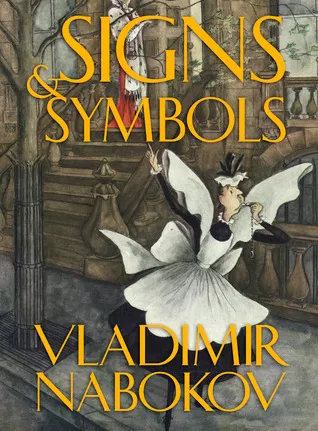
By examining the use of semiotics in his works, we can gain a deeper understanding of the power of symbols and signs in shaping our understanding of the world. As we continue to explore the realm of semiotics, we can gain a greater appreciation for the intricate web of signs and symbols that shape our understanding of the world around us.
Secondly, semiotics plays a crucial role in shaping and reflecting cultural values, norms, and identities.


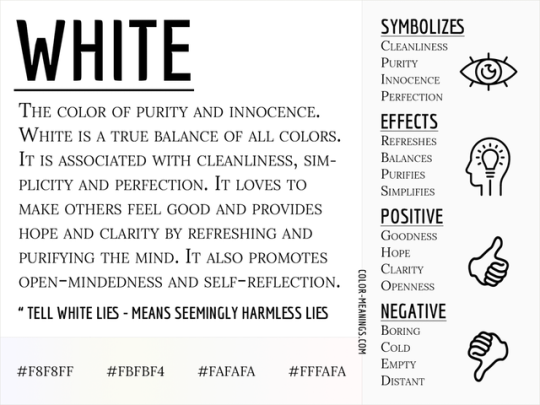
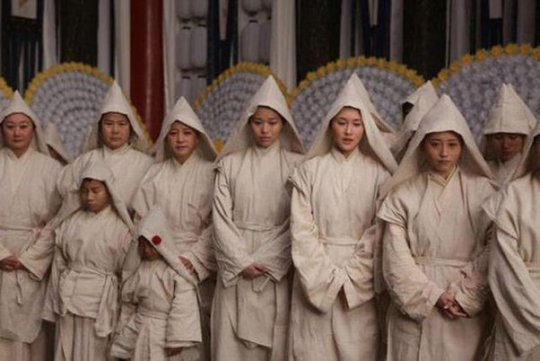
This shows how symbols and signs can change due to different cultures and contexts. Semiotics can be a powerful, universal language, but implementing this principle into a design process involves mindfulness and sensitivity to cultural diversity and design ethics.
In one of my design projects, I applied semiotics when creating a logo for a music festival. Drawing inspiration from musical notes and their dynamic strokes, I crafted a logo that embodies the vibrant energy and passion of the event.

Additionally, globalisation influences the semiotics we see.

This demonstrates how symbols evolve over time as they are influenced by various cultures. In conclusion, we can obtain a deeper interpretation of visual aesthetics through semiotic analysis.
~ 242 words
Reynolds, Mr. A. (2024, March 25). Semiotics in art and design: The power of symbols and signs. Adrian Reynolds. https://adrianreynolds.ie/semiotics-in-art-and-design/#:~:text=Semiotics%2C%20or%20the%20study%20of,effectively%20with%20their%20intended%20audience.
Chase Dyess, M. (2023, July 25). Semiotics: The unspoken language of Graphic Design. Medium. https://dyessdesign.medium.com/semiotics-the-unspoken-language-of-graphic-design-592db4f6c226
Sabbar, S., & Dalvand, S. (2018, January 1). Semiotic approach to globalization: Living in a world of Glocal Things. Journal of Cyberspace Studies. https://jcss.ut.ac.ir/article_64633.html
Semiotics. Theories of Visual Communication. (2016, September 2). https://theoriesofviscomblog.wordpress.com/semiotics/
Attain. (2023, March 20). Uncovering the hidden messages in our daily lives: The fascinating world of semiotics. LinkedIn. https://www.linkedin.com/pulse/uncovering-hidden-messages-our-daily-lives-fascinating-world#:~:text=Semiotics%20is%20the%20study%20of,unaware%20that%20it%20all%20exists.
0 notes
Text
Tech Hybrids: Your Partner in Digital Transformation
Introduction to Tech Hybrids
In the dynamic landscape of digital technology, staying ahead requires more than just keeping pace – it demands innovation, expertise, and a commitment to excellence. Established in 2023, Tech Hybrids has emerged as a premier player in the field, dedicated to providing cutting-edge solutions to meet the evolving needs of businesses worldwide.
The Mission of Tech Hybrids
At Tech Hybrids, our mission is clear: to bridge the gap between vision and reality. We understand that in today's fast-paced world, businesses need more than just technology – they need strategic partners who can translate their ideas into tangible results. That's where we come in. As a team of certified IT professionals, we are committed to delivering innovative solutions that drive growth, efficiency, and success.
Services Offered by Tech Hybrids
Our range of services encompasses a wide array of technological solutions, tailored to meet the diverse needs of our clients:
IT/E-Commerce Platforms: From basic web designs to complex e-commerce solutions, we specialize in creating dynamic online platforms that empower businesses to thrive in the digital marketplace.
App Building: Our team of experienced developers is adept at crafting customized mobile applications that enhance user experience and drive engagement.
Digital Branding: In today's digital age, establishing a strong online presence is paramount. We offer comprehensive digital branding services, helping businesses stand out in a crowded marketplace.
Global Reach and Collaborations
With a network spanning across six global companies, Tech Hybrids is uniquely positioned to offer comprehensive solutions to clients worldwide. Whether working directly or indirectly, our partnerships enable us to leverage the latest technologies and best practices to deliver unparalleled results.
The Glocal Approach
At Tech Hybrids, we embrace a "glocal" mindset – blending global expertise with local insights to deliver tailored solutions that resonate with our clients' unique needs. As an Omani-based company with a global outlook, we are committed to driving innovation and excellence on a global scale.
Success Stories
Our track record speaks for itself. From startups to Fortune 500 companies, Tech Hybrids has helped businesses of all sizes achieve their digital transformation goals. Our success stories are a testament to our unwavering commitment to excellence and customer satisfaction.
Our Dedicated Team
Behind every successful project is a dedicated team of professionals. At Tech Hybrids, we take pride in our team of certified IT professionals, whose expertise and passion drive our success. With a relentless focus on innovation and collaboration, we strive to exceed our clients' expectations at every turn.
Client Satisfaction and Testimonials
The satisfaction of our clients is our ultimate priority. We take pride in delivering solutions that not only meet but exceed their expectations. Don't just take our word for it – hear what our clients have to say about their experience working with Tech Hybrids.
Future Expansion Plans
As technology continues to evolve, so too does Tech Hybrids. We are committed to staying at the forefront of innovation, expanding our offerings, and forging new partnerships to better serve our clients' evolving needs.
The Importance of Technology in Today's World
In an increasingly digital world, the importance of technology cannot be overstated. From streamlining operations to enhancing customer experiences, technology plays a pivotal role in driving business success.
How Tech Hybrids Makes a Difference
What sets Tech Hybrids apart is our unwavering commitment to excellence and customer satisfaction. We don't just deliver solutions – we deliver results. Our holistic approach, combined with our dedication to innovation, ensures that our clients stay ahead of the curve in today's competitive landscape.
Our Commitment to Excellence
At Tech Hybrids, excellence is not just a goal – it's a way of life. From the quality of our work to the caliber of our team, we strive for excellence in everything we do. It's this commitment to excellence that sets us apart and drives our continued success.
Conclusion
In conclusion, Tech Hybrids is more than just a technology company – we're your strategic partner in digital transformation. With our comprehensive range of services, global reach, and unwavering commitment to excellence, we are poised to help businesses thrive in today's digital age.
FAQs
How can Tech Hybrids help my business?
What sets Tech Hybrids apart from other technology companies?
Can Tech Hybrids work with businesses of all sizes?
What industries does Tech Hybrids specialize in?
How can I get started with Tech Hybrids?
0 notes
Text
Top 10 Executive Search Firms in Ahmedabad: Navigating Success

Ahmedabad, a bustling city in the heart of Gujarat, is a hub of opportunities and growth. As businesses strive to excel in their respective industries, the need for top-tier talent becomes paramount. Executive search firms play a crucial role in connecting companies with the right executives who can steer them toward success. In this comprehensive guide, we’ll delve into the top 10 executive search firms in Ahmedabad, shedding light on their expertise and contributions to the local business landscape.
Top 10 executive search firms in Ahmedabad
WORKSOURCE PROFESSIONAL
Worksource Professional is the epitome of excellence in executive search firms in Ahmedabad, distinguished by our unwavering commitment to client satisfaction and unparalleled industry expertise. With a deep understanding of xfthe local market and years of experience, we are trusted advisors to businesses seeking to enhance their leadership teams. Our collaborative approach ensures that we align closely with our clients’ organizational values, sourcing top-tier talent tailored to their unique requirements. By leveraging our extensive network and innovative recruitment strategies, we deliver results-driven solutions that drive organizational success.
At Worksource Professional, we prioritize excellence, integrity, and continuous improvement in our executive search process. Through rigorous screening and personalized service, we ensure that only the most qualified candidates are presented to our clients, saving time and resources while maximizing the likelihood of a successful hire. With our strategic guidance and unwavering dedication, we empower businesses to navigate the complexities of talent acquisition and build high-performing leadership teams that drive sustainable growth and success.
ATHEVA SERVICES
Atheva Services stands out for its personalized approach to executive search, offering tailored solutions to meet the unique needs of each client. Their commitment to excellence and client satisfaction makes them a trusted partner in the recruitment landscape.
HIRE GLOCAL
Hire Glocal brings a global perspective to executive search, combining international best practices with local insights to deliver exceptional results. Their comprehensive services encompass every aspect of the recruitment process, from candidate sourcing to onboarding.
ACUMONT SOLUTIONS
Acumont Solutions excels in executive search by leveraging cutting-edge technology and industry knowledge to identify top talent. With a focus on precision and efficiency, they help businesses find executives who drive growth and innovation.
ALLIANCE RECRUITMENT AGENCY
Alliance Recruitment Agency is synonymous with quality and reliability in the executive search arena. Their team of experts goes above and beyond to understand clients’ needs and deliver customized solutions that exceed expectations.
INTEGRATED RESOURCES INC
Integrated Resources Inc. offers comprehensive executive search services tailored to the specific requirements of each client. Their commitment to building long-term relationships and delivering exceptional results sets them apart in the competitive market.
SUCCESS PLACEMENT CONSULTANCY
Success Placement Consultancy takes a proactive approach to executive search, leveraging its extensive network and industry expertise to connect businesses with top talent. Their dedication to client success ensures seamless placements that drive business growth.
SIMPLICITY
Simplihire simplifies the executive search process with its innovative solutions and streamlined approach. Their focus on efficiency and quality ensures that businesses find executives who not only meet but exceed expectations.
HUPTECH CONSULTANCY SERVICES
Huptech Consultancy Services combines technology with industry expertise to deliver exceptional executive search solutions. Their commitment to excellence and client satisfaction makes them a preferred choice for businesses seeking top-tier talent.
LANCETECH SOLUTIONS
Lancetech Solutions offers holistic executive search services that address clients’ specific needs and objectives. With a focus on quality and integrity, they help businesses in Ahmedabad find executives who drive success and innovation.
Frequently Asked Questions about Executive Search Firms
What distinguishes executive search firms from traditional recruitment agencies?
Executive search agencies specialize in recruiting senior-level executives and leaders for organizations, whereas traditional recruitment agencies focus on filling a wide range of positions across different levels within a company.
How do executive search firms ensure confidentiality during the recruitment process?
Executive search firms prioritize confidentiality by employing strict protocols, such as nondisclosure agreements and discreet communication channels, to safeguard sensitive information about both clients and candidates.
What factors should businesses consider when choosing an executive search firm?
Businesses should evaluate factors such as the firm’s industry expertise, track record of successful placements, depth of talent network, understanding of the client’s specific needs, and the firm’s approach to collaboration and communication.
Are executive search firms only suitable for large corporations, or can small and medium-sized businesses benefit from their services?
Executive search firms cater to organizations of all sizes. While large corporations may require executive search firms to fill high-profile leadership roles, small and medium-sized businesses can also benefit from their services to find top-tier talent for key positions.
What role do executive search firms play in diversity and inclusion initiatives within organizations?
Executive search consultants contribute to diversity and inclusion efforts by actively seeking out diverse candidates for leadership positions, promoting inclusive hiring practices, and helping organizations build diverse teams that reflect the communities they serve.
Conclusion:
In conclusion, selecting the right executive search firm can significantly impact the success and growth of your organization. By partnering with a reputable firm like Worksource Professional, you can access a wealth of expertise, industry knowledge, and a vast network of top-tier talent to elevate your leadership team. With the guidance and support of experienced professionals, navigating the complex landscape of executive recruitment becomes more manageable, ultimately leading to stronger partnerships and enhanced business outcomes.
As you embark on this journey to find the best executive search company in Ahmedabad, consider the unique needs and objectives of your organization, and choose a partner who shares your vision for success. Unlocking the potential of your leadership team is key to driving sustainable growth and achieving your business goals.
#Recruitment Agency in Bangalore#recruitment partners for MNC's in bangalore#job placement agency in bangalore#job consultancy in bangalore#job placement consultancy in bangalore#MNC companies recruitment partner in Bangalore#recruitment partner for MNC in Bangalore#recruitment partner for MNC#MNC Recruitment Agency In Bangalore#Recruitment partner for startups in Bangalore#Recruitment Consultants in Bangalore#Recruitment partners in Bangalore#Executive search companey in Bangalore#Executive search consultant in Bangalore
0 notes
Text
Domino's Traditional and Digital Marketing Strategies in India
When I was a kid, ordering pizza from Domino’s used to be an exciting treat! In college, Domino’s became a go-to when there were no other options. This was mainly because of its availability and affordability.A US based global giant, Domino’s entered India in 1996. Today, outside of the brand’s home nation, India has become its biggest market. It boasts a network of over 1,700 stores across 370+ cities.
Domino's changed the way Indians perceived pizza. It wasn't just about the food; it was about convenience, reliability, and a promise of deliciousness. Families, friends, and even solo diners turned to Domino's for celebrations, movie nights, and lazy Sundays. But it was not without challenges. Let’s look at marketing strategies that made Domino’s a successful brand in India.
Initial Challenges and Adaptations:
When Domino's first set foot in India, it faced several hurdles:
Cultural Adaptation:
The Indian palate is diverse, and pizza toppings needed to resonate with local flavors.
Paneer, tandoori chicken, and spicy sauces were introduced to cater to Indian tastes.
This is called glocalization.
Vegetarian Dominance:
India has a significant vegetarian population.
Domino's recognized this and created a robust vegetarian menu, which eventually became a game-changer.
Delivery Infrastructure: Ensuring timely delivery in a country with chaotic traffic and varied addresses was no small feat.
The iconic "30 minutes or free" guarantee was both a marketing strategy and a logistical challenge. But that USP got amazing traction for the brand.
Traditional Marketing Strategies:
While Domino's in India has heavily invested in digital marketing, they haven't neglected traditional marketing strategies completely. Here's a breakdown of some key traditional marketing tactics they employ:
1. Hoardings and Banners:
Strategic placement: Domino's utilizes strategically placed billboards, hoardings, and banners in high-traffic areas near their stores or in residential neighborhoods. These visuals often feature mouthwatering pizza pictures and promotional offers.
Building brand awareness: These traditional methods serve to increase brand awareness, especially in areas with limited internet access.
2. Print Advertising:
Newspapers and magazines: Domino's might utilize print media advertising in newspapers or local magazines, particularly during festive seasons or weekends when pizza consumption is likely to be higher.
Targeted reach: Print ads can be targeted to specific demographics depending on the publication chosen. For example, Domino's might advertise in a family magazine with a vegetarian pizza offer.
3. In-Store Promotions:
Signage and displays: Domino's utilizes in-store signage and displays to promote ongoing deals, new menu items, or combo offers.
Upselling and cross-selling: In-store displays can also be strategically placed near the checkout counter to encourage upselling (adding a side dish) or cross-selling (purchasing a beverage).
Digital Dominance:
1. Multi-Platform Approach
Domino's India has harnessed the power of various digital platforms to engage with its audience:
Social Media: Their active presence on platforms like Facebook, Instagram, Twitter, and YouTube allows them to connect with pizza lovers, share enticing visuals, and run interactive campaigns. They also use influencer marketing.
Mobile Apps: Domino's developed a user-friendly mobile app that enables seamless pizza ordering. Customers can customize their pizzas, track deliveries, and receive exclusive offers.
2. Making Pizza Ordering Easy and Interactive
Customization: The digital platform lets customers build their pizzas from scratch. They can select crusts (thin, hand-tossed, or cheesy), toppings, sauces, and even add sides like garlic bread or desserts.
Visual Menus: Domino's India uses mouthwatering visuals to showcase their menu items. High-resolution images of pizzas, sides, and beverages entice customers to place orders.
Interactive Promotions: They run contests, quizzes, and polls on social media. For instance, "Guess the Topping" or "Create Your Dream Pizza" engages users and keeps them excited about pizza.
3. Hassle-Free Ordering and Delivery
Quick and Hassle-Free Delivery
Efficient Delivery Mechanisms: Domino's streamlined its delivery process. They strategically placed outlets across cities to ensure quick access. Their delivery staff is trained for speed and accuracy.
Order Tracking: Customers can track their orders in real-time using the app. Knowing when their pizza will arrive adds to the excitement.
Reliability and Speed
Brand Image: Domino's reliability and speed transformed them from just a pizza chain to a dependable food delivery service. Customers associate Domino's with promptness and quality.
Consistent Delivery Times: Their commitment to delivering within 30 minutes (or free) created a sense of urgency and reliability. Even if the guarantee isn't always met, the effort to do so speaks volumes. This not only incentivized speed but also built trust.
1 note
·
View note
Text



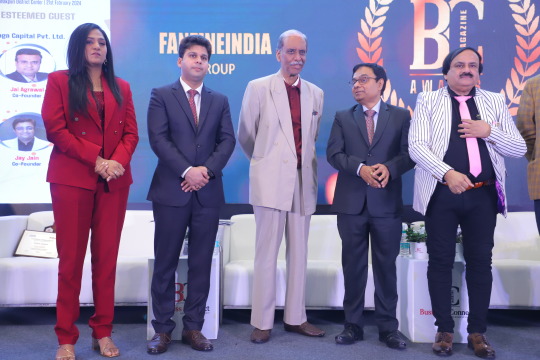

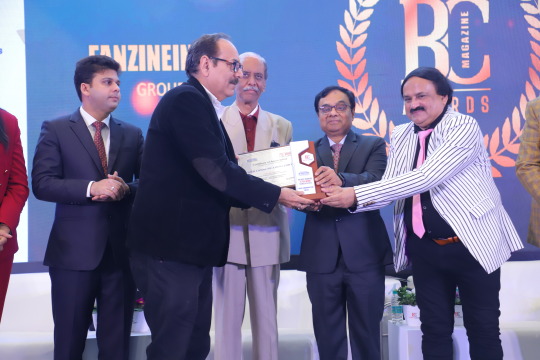

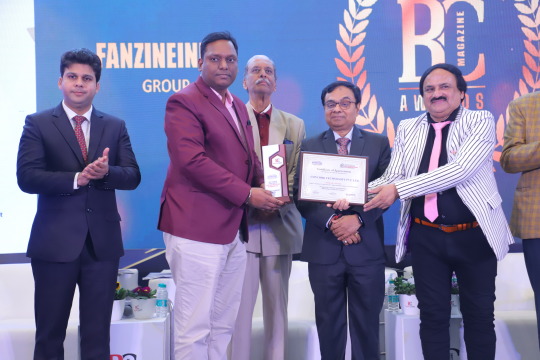






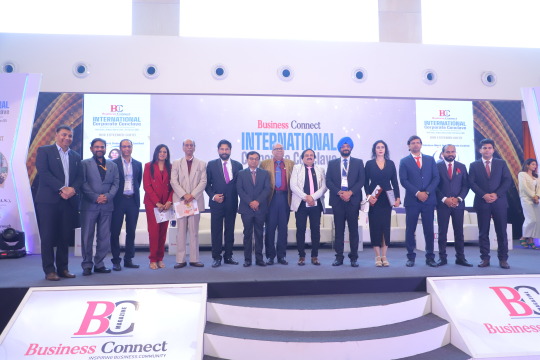


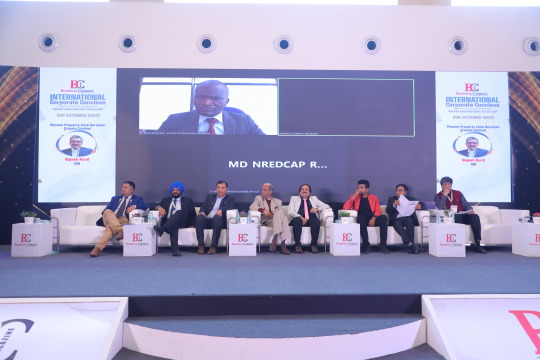



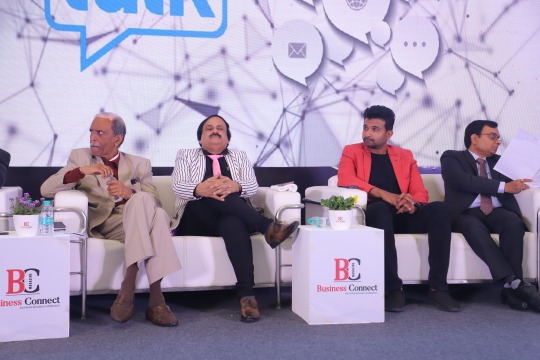
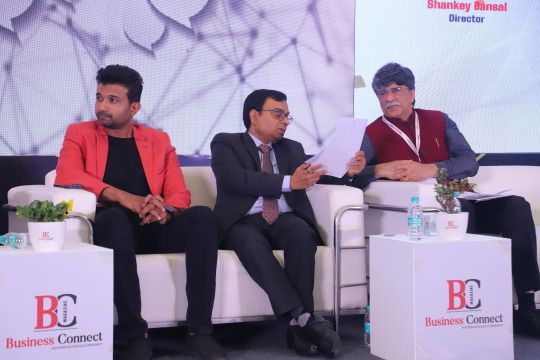
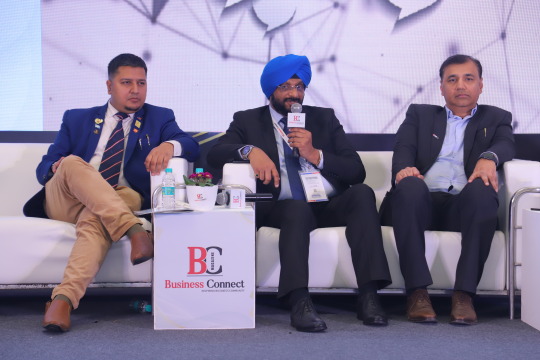

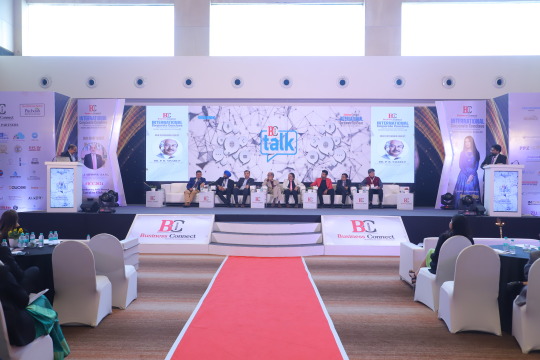

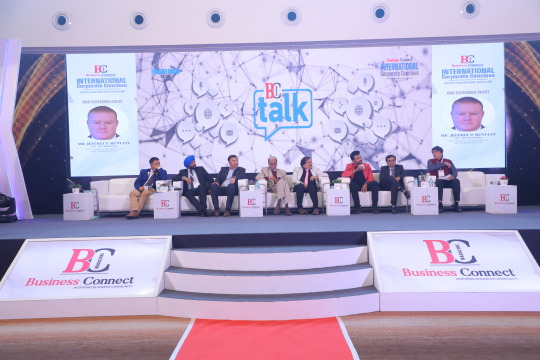
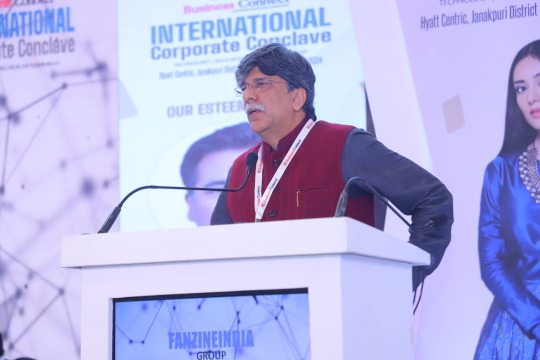

From Local to Global: Highlighting Insights from the International Corporate conclave 2024
Business Connect’s team extends its deepest gratitude to each one of you for contributing to the resounding success of our 10th mega gathering, International Corporate Conclave 2024. And needless to say, your presence and active participation is worth many praises in making this event an unforgettable experience.
The insightful discussions, entrepreneurial spirit, and diverse perspectives brought forth during the conclave showcased the essence of global cooperation. It was inspiring to witness industry leaders, innovators, and professionals coming together to share knowledge and forge meaningful connections
Our core theme that was on transforming India through ‘local to glocal’ by keeping our focus on technology, education and entrepreneurship was a revolutionary step towards revamping the business arena.
With mind blowing idea exchange that occurred during panel discussions and speeches made by business tycoons like you, we can expect to navigate the complexities of the business world with ease. Our collective efforts have not only elevated the Conclave to new heights but have also set a benchmark for future endeavors. It is a sheer testament to the dedication and enthusiasm of our fraternity.
As we reflect on the achievements of the Conclave, let us carry forward the momentum of collaboration and innovation. Your continued support is truly appreciated and valued, and we expect us to grab future opportunities to work together towards shared success.
At last, thank you for being an integral part of this grand success. Your gracious presence made a difference and helped us create a legacy of excellence.
Add Business Connect magazine to your Google News feed
Must Read:-
Top 10 Adorable Gifts for Your Special One
Top 10 Countries with Maximum Indian Population as Citizens
Top 10 highest-paid CEO in the World
Top 10 richest person of India
Top 10 Highest-Paid CEOs of India
#ICCInsights#CorporateConclave#GlobalBusinessSummit#CorporateLeadership#BusinessConversations#InternationalBusiness#ExecutiveInsights#ConclaveHighlights#GlobalCorporateForum#BusinessStrategies#LeadershipPerspectives#GlobalNetworking#CorporateInnovation#StrategicConversations#ExecutivePanel#BusinessSummit2024#InternationalCollaboration#IndustryPerspectives#CorporateExcellence#BusinessThoughtLeadership
1 note
·
View note
Text
BL Terms: shonen ai & yaoi
There are several terms used to describe various forms of BL content. In transnational fandom, the most popular has been: shonen ai & yaoi. These terms have origin in Japan and gained traction in international BL fandom. There is significant various in what these terms mean within in Japan and elsewhere. Internationally, yaoi is used to refer to BL containing explicit sexual content and shonen ai for BL devoid of explicit sexual content.
Shonen ai category includes meant-for-teens versions of BL as well as Chinese BL censored content (both censored adaptations as well as self-censored works). These may contain allusions to sex and other suggestive material.
These words are used globally, especially in animanga sphere and scanlation space.
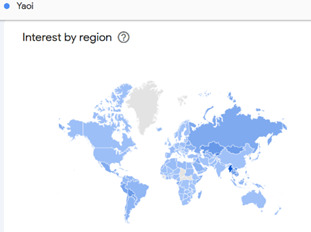

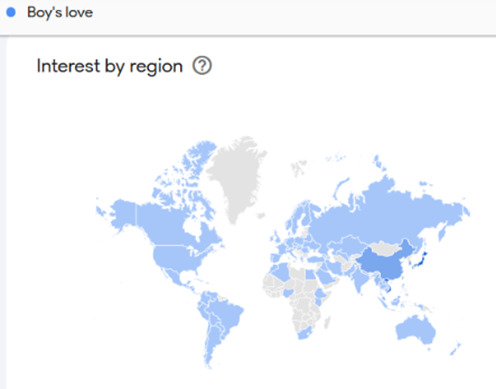
These terms have very different meaning in Japan. It is suggested to use boys love (BL) as an alternative to yaoi – shonen ai bifurcation, in line with Japan. But "BL" is slightly less popular among international audience and is an umbrella term. It fails to separate the genre based on sexual content and lacks in ability to reflect audience preference. In other words, BL as a term is incapable of filtering the way yaoi or shonen ai does. Moreover, sometimes yaoi is used by international fandom as an umbrella term, equivalent to BL.
Glocal
Also, there is variety in terms used in different countries. Danmei is the term most popular in China. This term is undermined by censorship. Web novels are increasingly tagged as 纯爱 chún ài [pure love]. Đam mỹ is popular in Veit nam. In Thailand, waai (วาย) or “Y” derived from yaoi is popular.
Gei comi
Bara is the most popular term for gei (gay) content made by predominantly androphilic mangakas with androphilic men as target audience (gei comi). Since bara (rose) is a Japanese term similar to pansy in English, it is regarded derogatory when used on androphilic (gay) men and its usage discouraged on the basis that its reclamation by queer community is incomplete/uncertain. However, most international audience are generally unaware of what bara means in Japan. For them, it is the name of a genre of manga which is visually different from most BL. It is not as popular as BL, within and outside BL fandom.
Live-action
BL seems to be the most popular term among viewers of BL live-action. There doesn’t seem to be any yaoi – shonen ai type bifurcation between live-action content given the limits on what can be shown on screen.
2 notes
·
View notes
Text
Post 3 - Paella
Paella is a regional dish from Spain, originally from the region of Valencia. Today, paella is viewed by Spaniards and foreigners as a symbol of Spanish culture (Anderson, 2013). However, paella is a diverse dish incorporating differing ingredients and recipes due to Spain’s distinct regional foodscapes. However, there is a very strict criteria for paella to be considered authentic (Evans, 2024). According to Vidal-González et al. (2022), the ingredients of “true Paella Valenciana” includes water, rice, olive oil, salt, chicken, rabbit, garrofo beans, ferradura beans, tomato, and saffron.
Paella’s significance has evolved over time and place, from initially being a dish for field workers to being a dish of celebration and having prominence at parties. Furthermore, the dish has travelled internationally, gaining popularity globally. For instance, paella has been adapted and assimilated into Australian culinary culture. As seen in Figure 1, a recipe for paella using notable different ingredients compared to true Paella Valenciana, can be found in an Australian cookbook. For instance, the inclusion of seafood replacing rabbit was the most noticeable difference.
Figure 1:
Paella recipe in an Australian cookbook.


Note. Adapted from Cookery the Australian Way by Cameron McDonnell and Russell Williams. 1980.
Interestingly, the only form of paella I recall eating has come from a tinned can. As seen in Figure 2, tinned paella can be found in supermarkets across Australia, and the world.
Figure 2:
Sole Mare Tinned Paella.


Note. Image captures by me.
The tinned paella is noticeably different to true Paella Valenciana, including ingredients such tuna and vegetables, and lacking chicken, rabbit, beans, and saffron. This makes me doubt if I have ever truly eaten an authentic version of paella. According to Evans (2024), Spanish food deserves better than to be served tinned. Although it increases the accessibility and diversity of this particular dish, this diversity can potentially disrupt the memory and tradition of paella.
References
Anderson, L. (2013). The unity and diversity of La olla podrida: an autochthonous model of Spanish culinary nationalism. Journal of Spanish Cultural Studies, 14(4), 400–414. https://doi.org/10.1080/14636204.2013.916027
Evans, H. (2024, February 17). Tinned paella is going down a treat. It costs PS22 but is it any good? Hannah Evans joins the Spanish chef Jose Pizarro to brave the tin-opener. The Times (London, England). https://go.gale.com/ps/retrieve.do?tabID=T004&resultListType=RESULT_LIST&searchResultsType=SingleTab&retrievalId=6ad9d115-3f64-444a-aee9-120f45e31e64&hitCount=1&searchType=AdvancedSearchForm¤tPosition=1&docId=GALE%7CA782817633&docType=Recipe&sort=RELEVANCE&contentSegment=ZONE-MOD1&prodId=AONE&pageNum=1&contentSet=GALE%7CA782817633&searchId=R1&userGroupName=unimelb&inPS=true
McDonnell, C., & Williams R. (1980). Cookery the Australian Way (Third Edition).
Vidal-González, P., Medrano-Ábalos, P., & Sáez Álvarez, E. J. (2022). A nightmare glocal discussion. What are the ingredients of Paella Valenciana? International Journal of Gastronomy and Food Science, 27, 100430. https://doi.org/10.1016/j.ijgfs.2021.100430
0 notes
Text

The outset of the new year is always an exciting time for the unveiling of annual food trend predictions and, so far, 2024 is no exception! With the top trends once again highlighting American’s growing preference for sustainably produced, eco-friendly foods, rest assured that your local farmers market is always going to offer an important and environmentally-sound way to source your weekly groceries. Here is a look at some of the other big trends that are shaping the food and beverage industry at large and how you can embrace them while shopping in the farmers market this coming year.
Make Room for Mushrooms
According to key indicators, mushrooms will hit it big in 2024! With sprouting interest in plant-based and plant-forward diets that are better for both the planet and our own health, mushrooms provide a readily accessible and affordable meat replacement full of hearty texture, umami flavor and nutritional goodness. In particular, Lion’s Mane–a spongy, shaggy mushroom native to North America that grows on woody tree trunks and logs–is surging in popularity thanks to its mild flavor and velvety texture that mimics shellfish like scallops, lobster and crab.
To learn about their nutritive properties, unlimited culinary potential and creative ways to incorporate more mushrooms in your diet this winter, be sure to visit the Mushrooms.NYC booth. Mushrooms.NYC is family-owned and run by a collective of long-time friends who came together through their passion for urban farming and sustainability. The mushrooms they grow are chockfull of essential nutrients, quick and easy to prepare and offer a low-carbon alternative to meat in many recipes.
It’s a Big Dill: Pickled and Fermented Foods
Pickles are the ‘it’ ingredient again according to the 2024 food trends report from Datassential, a restaurant and menu consultancy. Driven by an exploding interest in functional foods that can boost one’s gut health and the white-hot trend of “newstalgia” that blends familiar flavors with something new and fresh, pickled and fermented foods are set to take center plate in 2024!
Evidence of this trend includes a ‘dill-uge’ of dill pickle flavor in highly processed foods like commercial ketchup and potato chips. But don’t settle for junk food to get your flavor fix: real, old fashioned pickles are a veritable institution in New York farmers markets, with a zingy variety of seasonings and styles available. So, if you want a bite of the real dill, stop by Dr. Pickle for briny, tangy, crunchy pickles and a range of pickled delights from olives to sauerkraut to giardiniera and more.
To give your microbiome and spicy Korean food cravings a real treat, grab a jar of Kimchi Kooks small-batch kimchi that's made in Brooklyn using fermented, seasonal, local vegetables such as kale, cabbage, beets and lotus root. Raw and gluten-free, their kimchi is packed with essential vitamins, minerals and non-dairy probiotics. And swing by SayChef to indulge in their culinary creations featuring local produce from the far east end of Long Island. Chef David uses a special canning method he learned while studying in Italy to preserve and seal their unique recipes such as Sicilian Caponata, Napoli Marinated Artichoke Hearts, Pickled Golden Sweet Beets, and Pickled Turnips & Dill in beautiful, reusable glass jars.
Soup it up!
Just in time to thaw out over cold weather comfort food, The New York Times and other food trend prognosticators have proclaimed soup to be 2024’s Dish of the Year! Not only is soup the ideal winter fare, it also provides a perfect medium for experimenting with other leading food trends including vegetable-forward meals, cross-cultural mashups, and ‘glocal’ flavors that combine global cuisine with locally grown and produced ingredients. For internationally inclined gastronomes, the glocal food movement lets you take your taste buds on a tour of the world without the pricy travel tab or the need to leave your cozy kitchen – a win-win on all accounts!
To get an “instant” soup fix this Sunday, stop by KITCHEN 36 INC who create vegan and vegetarian small-batch soups that taste just like homemade. All their soups are made from scratch using a variety of seasonal, fresh ingredients and non-GMO beans and legumes. They hand chop, slow-simmer and freeze the soups to maintain their freshness. Just heat and eat for a healthy, delicious and satisfying meal! Alternatively, if you want to relish the snugness of your kitchen while preparing your own steaming pot of goodness, pick up chicken stock from Yellow Bell Farm and winter veggies from the farmstalls to make this hearty winter vegetable soup recipe by Martha Stewart.
We hope you enjoyed this fun glimpse into the presently unfolding food future of 2024 and look forward to seeing how these predictions play out within the milieu of the farmers market. But, while diet fads and food trends may come and go, fresh, nutritious, seasonal, locally grown and sustainably produced foods are sure to remain a fixture on these lists no matter what the latest spin or twist on them may be. That’s one trend I think we can all get behind this year and beyond!
#downtoearthmkts#farmersmarket#shoplocal#buylocal#localfood#farmersmarkets#eatdowntoearth#foodtrends#2024 food trends
0 notes
Text













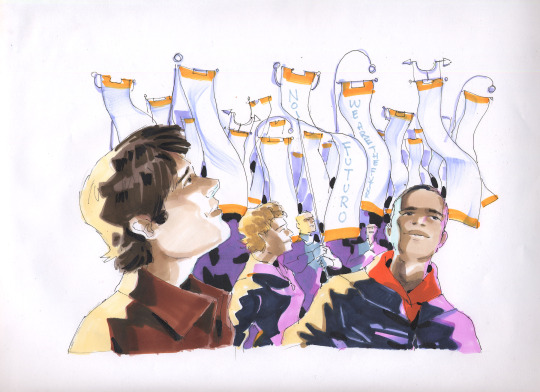



"We Are The Future" (project) (2004) Rome, Circus Maximus - broadcaster NBC opted out 'last minute'. MTV Italy stepped up and did then broadcast (low budget) Even so, there were half a million spectators!
<<Nearly two decades after producing the historic "We Are The World" recording, Quincy Jones will gather many of the world's best-recognized artists and personalities for a global concert marking the launch of a worldwide humanitarian effort aimed at helping children in war-ravaged cities. "We Are The Future" will take over Rome's Circus Maximus on May 16 for a globally telecast and webcast concert to draw the eyes of the world to the alarming increase in mortality rates among children in these areas.
The event is free, but 100 percent of the proceeds from the concert's broadcast and related merchandise sales will benefit "We Are The Future" programs, including child centers in six cities worldwide. The first center opened April 8 in Kigali, Rwanda. Other centers will open later this year in Addis Ababa, Ethiopia; Asmara, Eritrea; Freetown, Sierra Leone; Kabul, Afghanistan; and Nablus on the West Bank.
In the last decade alone, 2 million children were killed, 6 million injured and 12 million left homeless as the result of regional conflicts. In developing countries that are in conflict or post-conflict situations, 30,000 children under the age of five die every day, many from easily preventable causes. Concert producer Quincy Jones said, "This event is a clarion call to the world to take notice of the plight of children everywhere. Mortality rates among children are soaring and the international community must respond. We believe that 'We Are The Future' is an important first step."
"We Are The Future" is the collective dream of Quincy Jones' Listen Up Foundation, The Glocal Forum, founded by chief Oslo Peace Accords negotiator Uri Savir, and visionary leader for peace Hani Masri. Together in a strategic partnership with the World Bank and its president James Wolfensohn, and with the City of Rome and its Mayor Walter Veltroni, the "We Are The Future" co-founders are working to improve the lives of children victimized by conflict.
Global broadcast and webcast partners will be announced shortly...>> EXTRACT FROM PRESS RELEASE
WATF SET ON THE CIRCUS MAXIMUS, ROME W. THE PALATINE HILL BACKDROP (2004)
PRODUCTION DESIGN: DEAN TSCHETTER (FOR NBC)
ART DIRECTOR & ART DEPT. MANAGER (ROME, ITALY, @ "STUDIOS", VIA TIBURTINA) EDWIN A. FRANCIS

HERE'S THE (FINAL) POSTER ->

0 notes
Text
About Lionel Velloz
Introducing Mr. Lionel Velloz, a driven young entrepreneur whose passion for leveraging technology to solve real-world problems has defined his remarkable journey spanning over two decades across a multitude of industries. As the founder of Ace Technologies & Infrastructure Limited, he is dedicated to disrupting the infrastructure sector with innovative solutions, driven by a vision of creating meaningful change.
Mr. Velloz's illustrious career boasts a diverse range of leadership roles, each contributing to his profound expertise and invaluable insights. From spearheading ground-breaking initiatives in infrastructure development at Ace Technologies & Infrastructure Limited, to pioneering cutting-edge technological advancements in manufacturing and exports at Art of Technologies Infrastructure Limited, and subsequently revolutionizing marketing strategies at Glocal Marketing Solutions Pvt. Ltd., his trajectory exemplifies a relentless pursuit of excellence.
His entrepreneurial spirit and astute business acumen have been pivotal in navigating the complexities of various sectors, including manufacturing, international trading, information technology, and global supply chain management. Committed to continuous learning, growth, and making a positive impact on society, Mr. Velloz's strategic foresight coupled with his unwavering commitment to innovation has consistently propelled organizations under his purview to new heights of success.

Under his stewardship, all the above companies have emerged as beacons of industry excellence, adeptly addressing the evolving needs of the market with a blend of expertise and innovation. Mr. Lionel Velloz stands as a testament to transformative leadership, embodying the ethos of precision, finesse, and unwavering dedication to achieving unparalleled results.
1 note
·
View note